Ordinary Beauty Closely Observed
Professional photographer Susan Francy employs scanning to produce art
BY Amanda Lisk
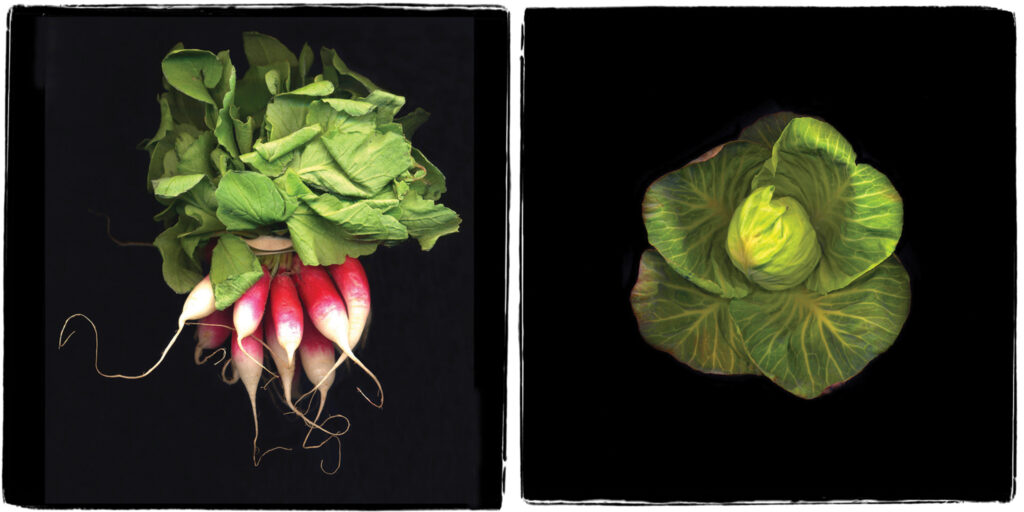
Scanography, often referred to as scanner photography, is an art form that captures incredible detail by using a flatbed scanner.
Professional photographer and former journalist Susan Francy began playing around with the concept while living in Florida. Among her first subjects were seagrape leaves. When their magnificence proved to be too great for what her camera could achieve, she went searching for a way to capture their full beauty.
“I tried photographing them and just couldn’t get the detail right. I had a friend who used her flatbed scanner for scanning children’s clothes and the images were spectacular. I said, ‘Let’s try this with the leaves,’ and that’s how it started,” she says.
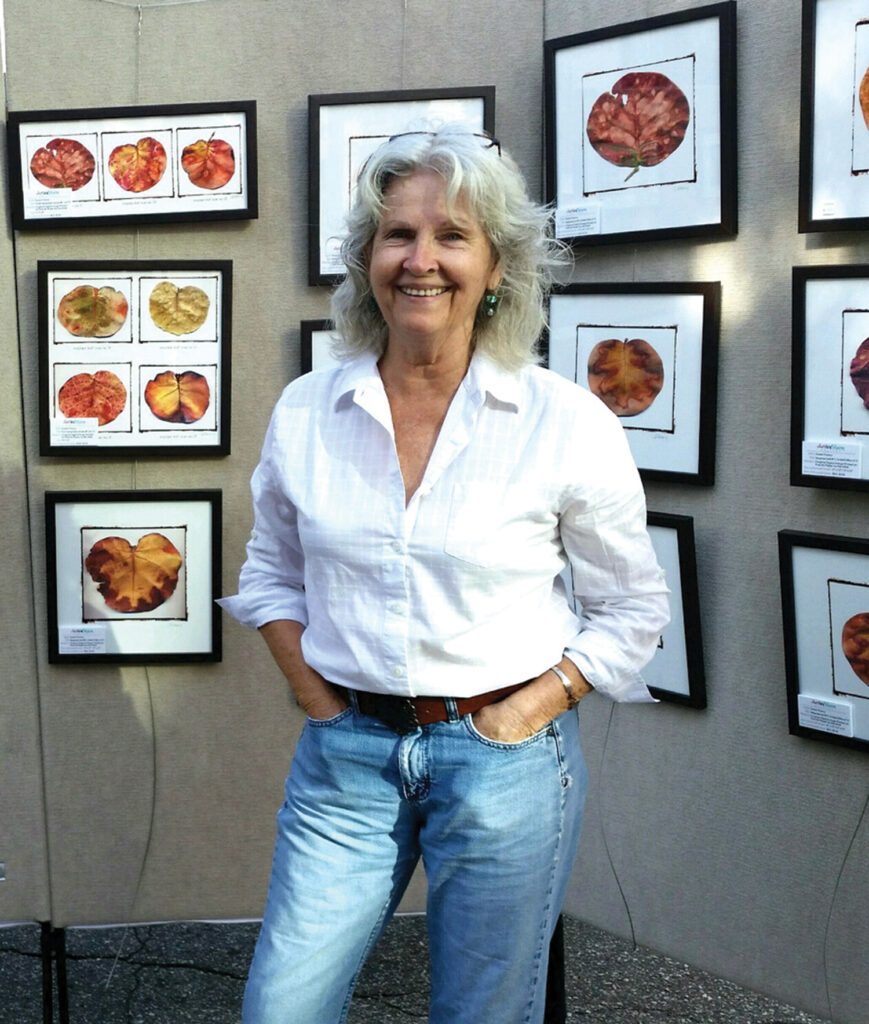
Stunning images of tulips, peonies, turnips and radishes are captured with such authenticity it truly appears as if they are in their natural habitat, as if one is getting to peek in on their day.
Francy discovered how to create her own style of the art form by accident.
“When I started, the top of the scanner was down and the background of the image was sort of a grayish white,” she says. “Then, one time I forgot and left the top up and that’s how I got the black background and so that’s how I’ve been doing it ever since.”
Francy, who now lives in Wilmington, describes her work as “ordinary beauty, closely observed.” She is a former
student of Denis Reggie, noted wedding photographer who taught wedding photojournalism.
Francy tells a story with each of her scanographs in the precision and detail of their display. Her favorite series is of tulips at each stage of life.
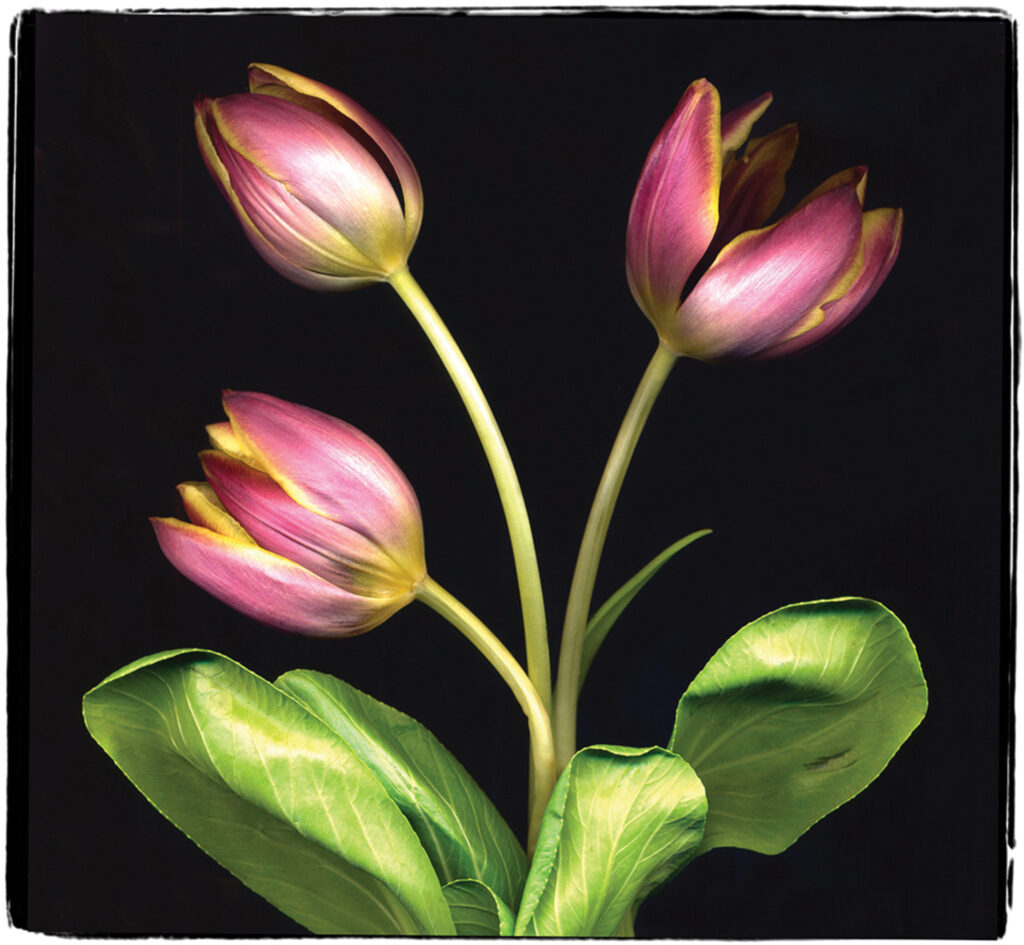
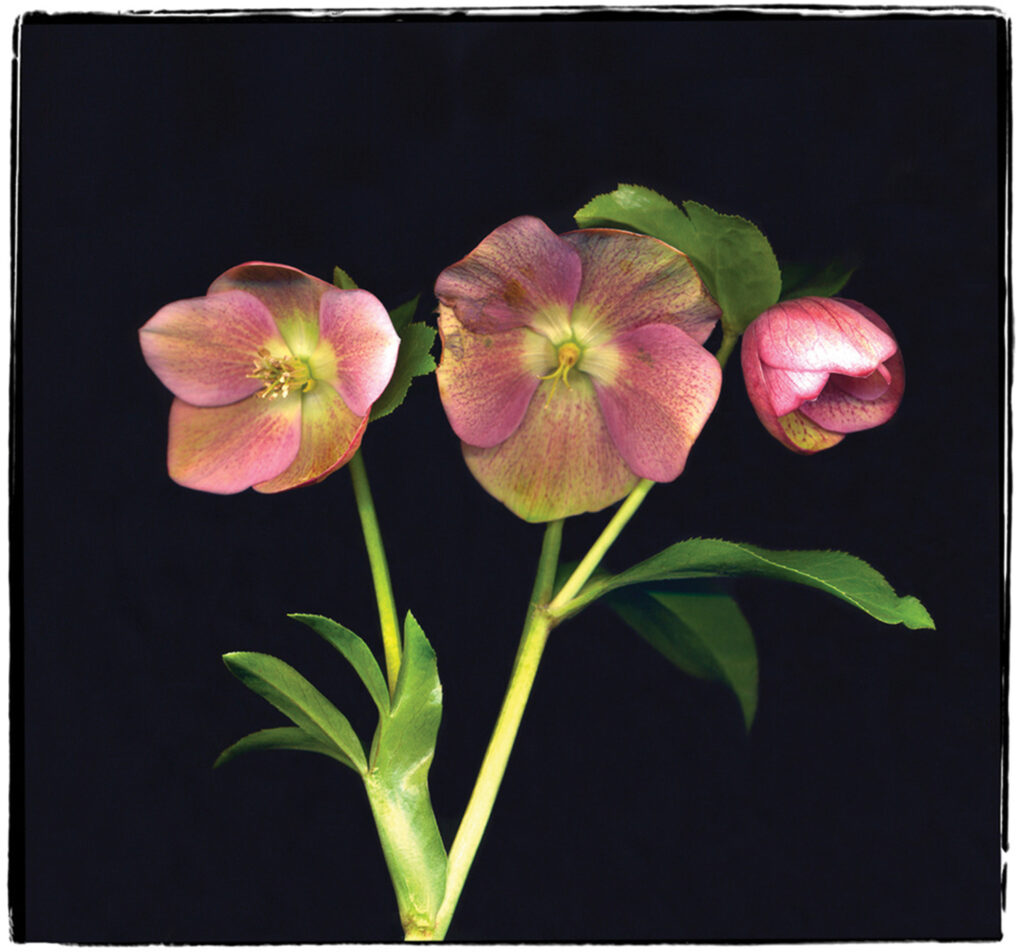
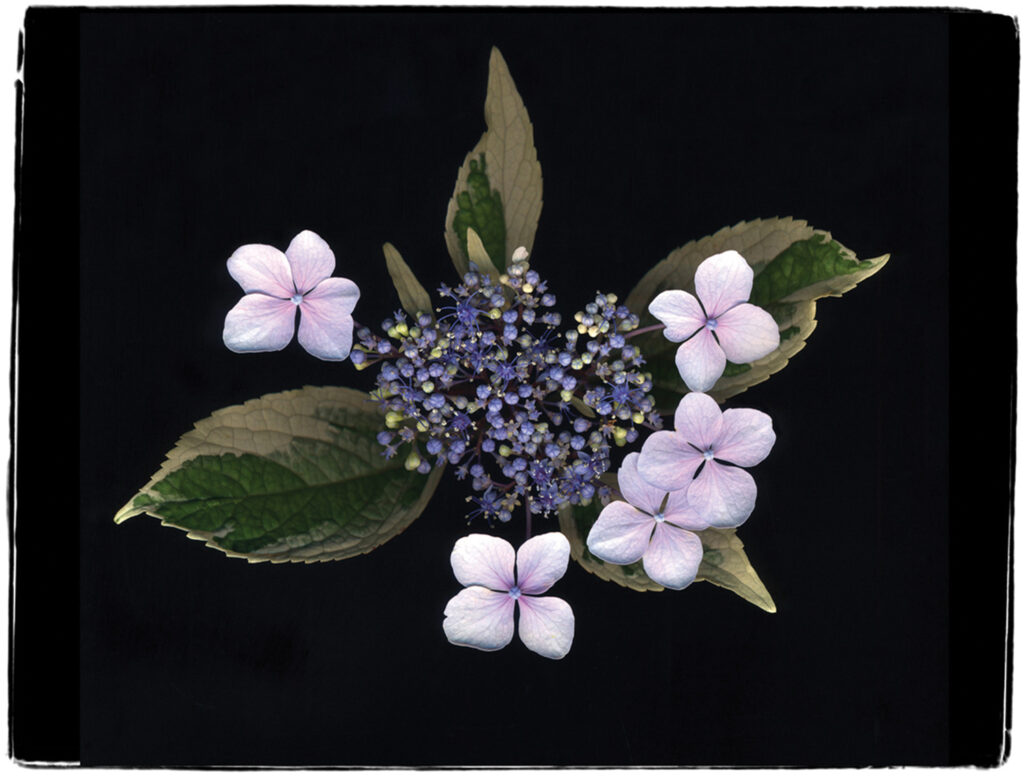
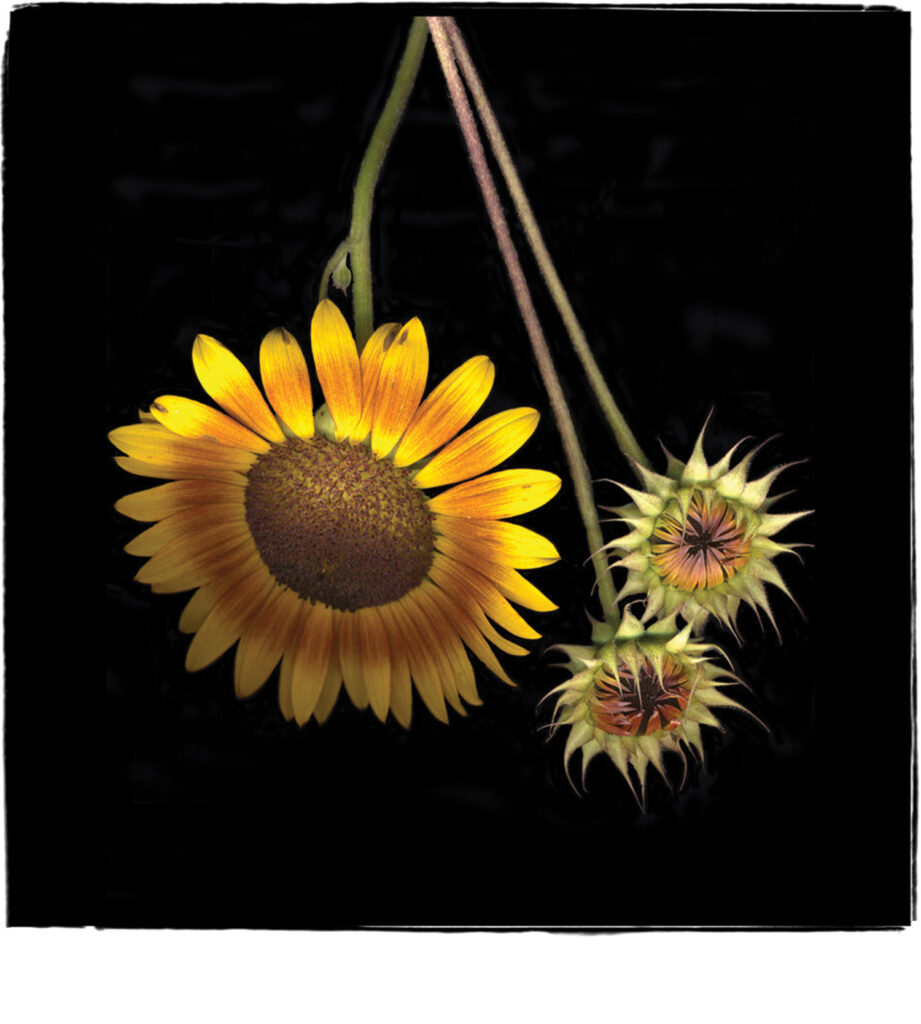
“Tulips change so much, they were just full of movement, full of poetry,” she says.
Another series is of radishes and turnips found at the Tidal Creek outdoor market.
“With the vegetables they are so beautiful. I tie them with twine. I’m very particular about placement. These little elements contribute to what I like to call a sense of movement, so they don’t seem unearthed, they seem dynamic,” Francy says.
Francy turned her images into greeting cards and gifted them to artist Elizabeth Darrow who grew so fond of them she had them framed. Darrow encouraged her friend to
pursue scanography commercially.
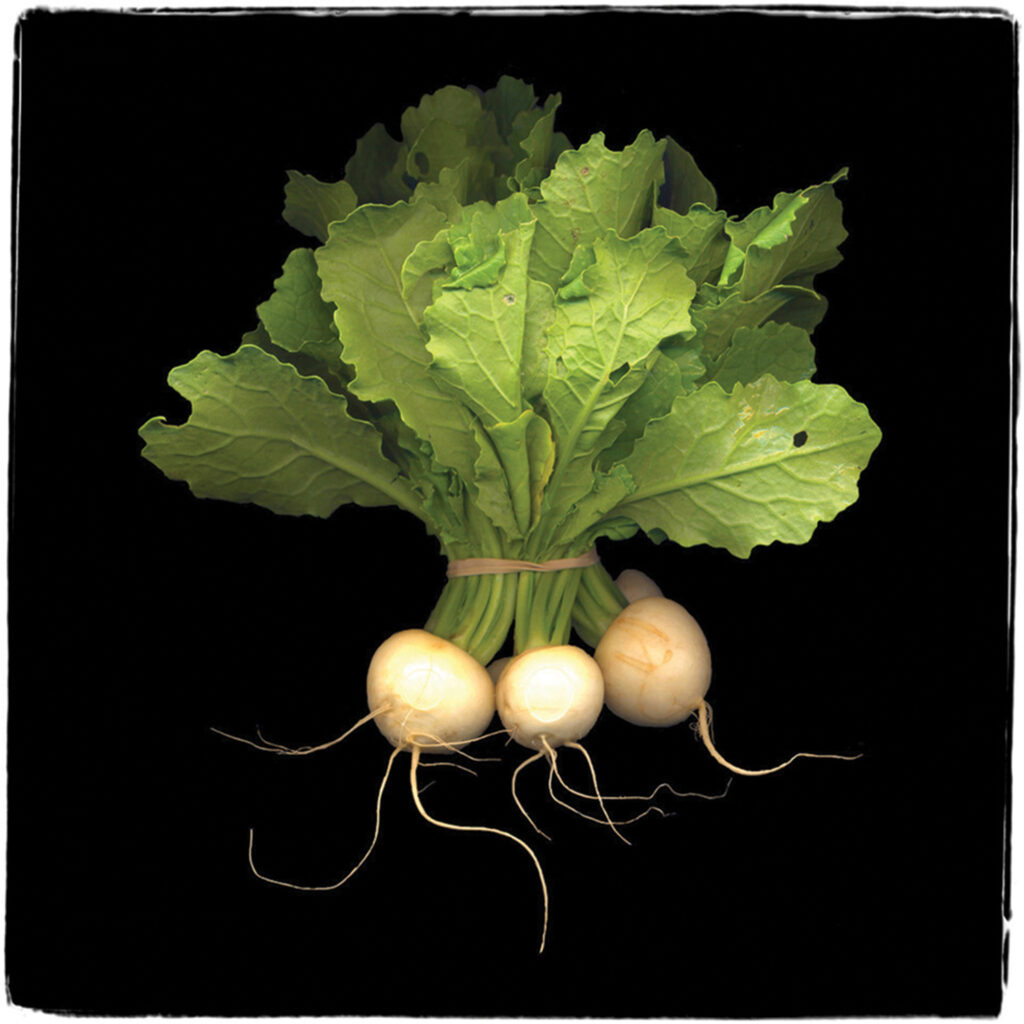
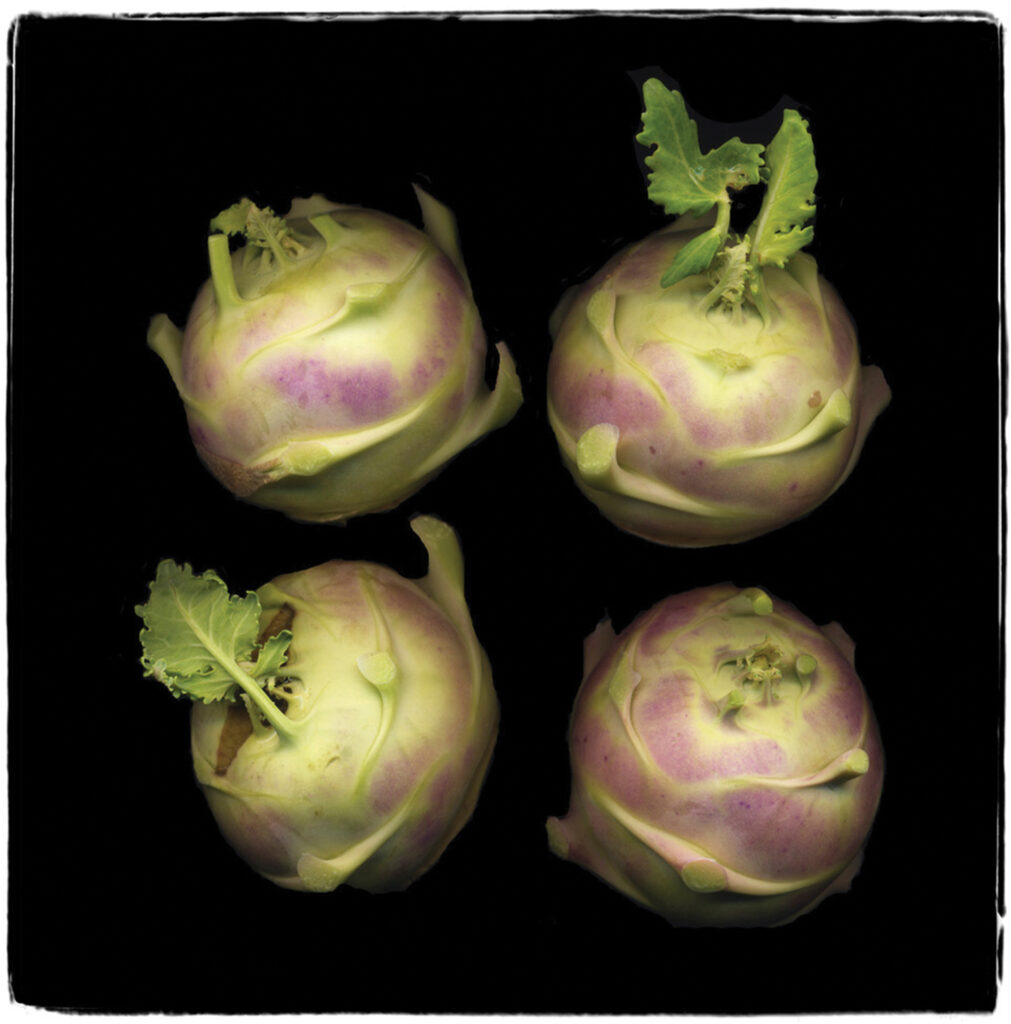
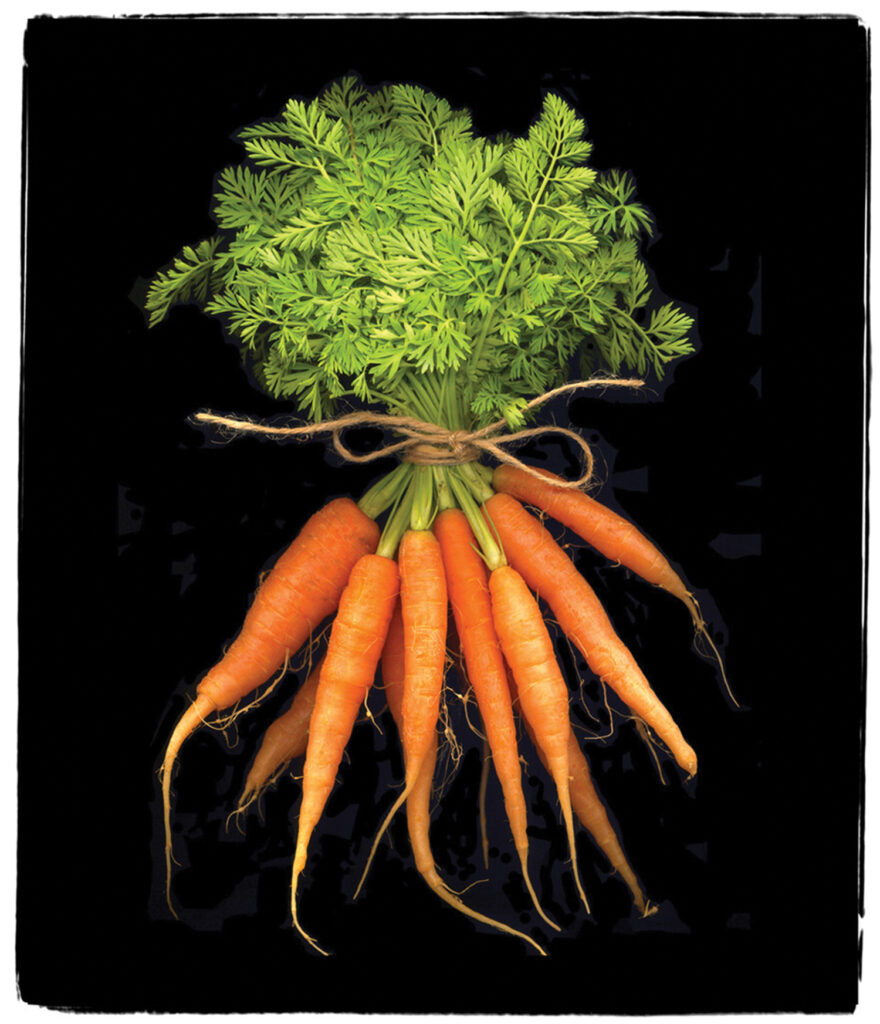
“Susan Francy combines artistry and exquisite technique to create original, stunning scanographs and photography,” says Amy Grant, owner of Art in Bloom located at Mayfaire. “It has been an honor to work with Susan over the years and see her
continue to experiment with her work and see her art evolve.”
Sonia Landy Sheridan, founder of the Generative Systems program at the Art Institute of Chicago that taught students to integrate technology into art, is said to have been the first to introduce scanography via Xerox machines in the late 1960s. Art scanning again became popular in the early 2000s as advancements in scanners emerged.

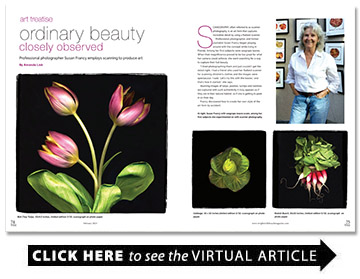
great work thank you
Love this work.
Stick lovely colors and textures.